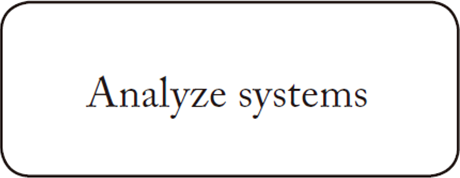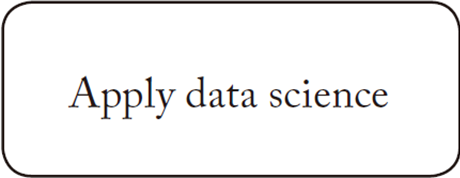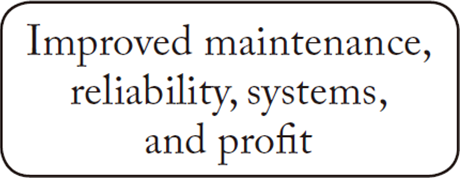Railway SystemsMobility
1. RPC System at Shin-Miyama SP for Kyushu Shinkansen Service by JR Kyushu
For the purpose of effective use of train regenerative electric power, a railway static power conditioner (RPC) was delivered to the Shin-Miyama sectioning post (SP) for the Kyushu Shinkansen service provided by Kyushu Railway Company (hereinafter “JR Kyushu”) and its commercial operation started in November 2019.
Since alternating-current-electrified sections for Shinkansen are separated by an SP section, regenerative electric power cannot be transferred between adjacent SPs. However, this can become possible by installing an RPC. This system consists of an RPC and a power arithmetic unit installed in the adjacent substation. Based on the power information sent via communication with the power arithmetic unit, the RPC transfers excess regenerative electric power to power trains in the other electrified sections for effective use. The RPC can transfer up to 5.3 MW (rated power: 1.3 MW) using a power converter equipped with insulated-gate bipolar transistors (IGBTs).
[1] Use of regenerative electric power by RPC designed for installation at the Shin-Miyama SP ![[1] Use of regenerative electric power by RPC designed for installation at the Shin-Miyama SP](./image/fig_01.png)
2. Driver Support for Single-driver Operation, Based on Vehicle-side Camera Images
Currently, mirrors and industrial televisions (ITVs) are installed on platforms to support the driver in checking passengers getting on and off the train during single-driver operation. As, however, the mirrors and ITV are fixed to the ground, the ground equipment has to be reconstructed when the train formation and stopping positions change.
To address this issue, Hitachi has developed an onboard closed circuit television (CCTV) system that displays images taken with the cameras installed on the sides of each vehicle (vehicle-side cameras: see the photo on the left) on a monitor installed over the driver’s seat (image display device: see the photo on the right) to allow the driver to check passengers getting on and off the train from the driver’s seat. Since this onboard camera system does not require ground equipment, there are no restrictions on the train formation or stopping positions. The system can also be applied to trains with a relatively long train formation.
The vehicle-side cameras are also thin, vibration-resistant, and waterproof. Their shape is designed so that they can be installed on the vehicle sides. Hitachi’s imaging technology provides stable viewability to the driver without any impact from direct sunlight or at night.
In the future, Hitachi will also consider functions that will use vehicle-side images to detect dangerous events occurring on platforms by means of image processing and artificial intelligence (AI).
[2] Vehicle-side cameras installed on the vehicle sides (left: first car right: middle car) (left) and a monitor installed above the driver’s seat (display device and an example of night images) (right) ![[2] Vehicle-side cameras installed on the vehicle sides (left: first car right: middle car) (left) and a monitor installed above the driver’s seat (display device and an example of night images) (right)](./image/fig_02.png)
3. Power Suspension/Transmission Automation Function of CSC System for Conventional Lines of JR Kyushu
A power suspension/transmission automation function was applied to the centralized substation control (CSC) system for JR Kyushu’s conventional lines to improve the functions of the CSC and the programmed route control (PRC), and to increase the operational efficiency of power commands through a linkage between systems. The system commenced commercial operation in March 2020.
In the past, power and transport command operations were prone to human error because they were used to verbally confirm there were no trains in sections that were to be de-electrified before suspending electrification. Currently, the CSC has been linked to the PRC and power suspension/transmission checking PCs have also been installed in operator-controlled stations to automatically check if there is any train on the line, check the completion status of station work, and disable the automatic control of traffic lights. In addition, substation equipment can also be automatically controlled according to its schedule to make the overall efficiency of command operations related to the suspension and start of electrification more efficient.
[3] Overview of the power suspension/transmission automation system ![[3] Overview of the power suspension/transmission automation system](./image/fig_03.png)
4. New E261 Series Limited Express Train (DC) for JR East Railway Company
East Japan Railway Company (hereinafter “JR East”) has collaborated with the local community in the branding of the Izu area to let passengers experience the authentic attractions of Izu. JR East has also developed the new E261 series limited express train [direct current (DC)] “Saphir ODORIKO” as a new sightseeing limited express train to demonstrate these attractions to the world.
Hitachi engaged in manufacturing of rolling stock (including bogies, collaborated in manufacturing with Kawasaki Heavy Industries, Ltd.), the main traction equipment and train control system in the E261 train project, and manufactured the carriages in collaboration with JR East. For the traction circuit, Hitachi delivered a variable-voltage variable-frequency (VVVF) inverter equipped with a full silicon carbide (SiC) power devices, which is Hitachi’s strategic product, on a commercial train for JR East for the first time to meet the customer’s requests for energy-saving and to reduce CO2 emissions.
As for the control system, Hitachi implemented the integrated train communication networks for evolvable railway operation system (INTEROS*), which is a train control system using Ethernet technology. The use of the general-purpose communication technology enables real-time transmission of train status and achieves functional expansion that will lead to Internet of Things (IoT), energy-saving, condition-based maintenance (CBM) and improved passenger services.
[4] Electrical equipment mounted on and photo of the JR East’s new E261 series limited express train (DC) ![[4] Electrical equipment mounted on and photo of the JR East’s new E261 series limited express train (DC)](./image/fig_04.png)
5. New TX-3000 Series (AC/DC) Tsukuba Express Commuter Train
Metropolitan Intercity Railway Company, which operates Tsukuba Express, has introduced the new TX-3000 series commuter train, which is a successor technology developed for the TX-2000 to provide enhanced transport services to passengers and reduce the environmental load.
The rolling stock cars are provided with priority seats and free space as well as universal design seats, providing a seat height that is suitable for sitting and standing in order to improve passenger comfort on the train. The TX-3000 has also adopted a main traction converter and auxiliary power unit that use full SiC power devices as well as an automatic train control/automatic train operation (ATC/ATO) unit, which minimizes acceleration and deceleration to achieve energy-saving operation to increase the energy-saving effect.
Hitachi engaged in manufacturing of TX-3000 rolling stock and main equipment such as main traction unit, auxiliary power unit, vehicle information control and management unit (Synaptra), ATC/ATO unit and LCD train announcement indicator. TX-3000 was commercially launched in March 2020.
6. N700S Shinkansen Train of JR Central
[6] N700S Shinkansen train of JR Central and the result of fluid resistance analysis of the front shape ![[6] N700S Shinkansen train of JR Central and the result of fluid resistance analysis of the front shape](./image/fig_06.png)
Central Japan Railway Company (hereinafter “JR Central”) has introduced a N700S Shinkansen train, which is the latest fully-remodeled train in 13 years since the N700 model. While improving safety and stability, the N700S model has adopted new technology for less energy consumption. Hitachi engaged in production of the rolling stock, , bogies, traction system, and automatic train control unit.
The shape of the leading car is based on a dual supreme-wing design optimized by simulations to reduce aerodynamic resistance and noise. The bogies are designed based on vehicle dynamics analysis to improve the ride comfort. The N700S is equipped with a main converter using a SiC power device with less energy consumption and highly heat-resistant, which is the world’s first adoption for high Shinkansen traction system. A 6-pole motor is adopted instead of the conventional 4-pole configuration for the main motor. The weight and the dimensional scale is decreased to adopt the main motor while ensuring the same output level.
While reducing the weight and the dimensional scale, the layout types of the underfloor equipment have been reduced from eight to four types. As a result, a standard train has been achieved to enable flexible configuration of the number of trailer cars and the motor/trailer (MT) ratio (output ratio). A battery-based self-propelled system using lithium-ion batteries has been mounted in the excess underfloor space produced through the optimization of the underfloor equipment.
In terms of environmental performance, the optimization of the shape of the leading cars and the adoption of SiC power devices can reduce the power consumption by about 6%, compared with the N700A, contributing to energy savings.
7. YC1 Hybrid Train of JR Kyushu
JR Kyushu has about 1,500 conventional line carriages and operated them for over 40 years. Its diesel trains are also deteriorating. New diesel hybrid trains equipped with storage batteries have been adopted for the purpose of replacing the deteriorated trains. The new model is named “YC1,” which takes the first letters of each word in the Japanese phrase Yasashikute Chikaramochi (gentle and powerful).
The YC1 model is JR Kyushu’s first diesel hybrid train, which provides the power from its diesel engine/main generator and storage batteries to drive the main motor under power. The YC1 stores regenerative power in the storage batteries while decelerating by braking. It also supplies energy when starting the engine, stopping the train at a station, or performing an idling stop with the engine to achieve efficient energy performance with the assistance of the storage batteries. The YC1 also reduces CO2 emissions to improve the environmental load. Hitachi engaged in manufacturing of its main circuit control system and train information control unit, and commercially launched the YC1 model in March 2020.
[7] YC1 hybrid train of JR Kyushu (left), its storage batteries (top-right) and main converter (bottom-right) ![[7] YC1 hybrid train of JR Kyushu (left), its storage batteries (top-right) and main converter (bottom-right)](./image/fig_07.png)
8. Railway Maintenance Driven by Data
Predictive fault diagnosis is a fundamental application of Hitachi’s Lumada solution. Working with the colleagues in rolling stock and signalling, operations service & maintenance (OS&M) has developed a digital articulated approach to maintenance. Present in all of Hitachi Rail Limited’s operational regions, this approach not only optimizes its day-to-day business; but informs the design and manufacturing of future products through the improvement of quality and cost. In outline, the process enables the company to work with its customers and optimize the use data to determine the cause of failures – preventing repeat defects and improving reliability and whole life costs in the process.
Adopting such processes has required OS&M to merge the system domain competences of data science and IT technology and expertise. As a result, OS&M teams are now able to embed engineers and staff directly into design teams and provide requirements for improving projects in term of maintainability and predictability. This continuous lesson learnt process allows strong support to design to maintain.




A good example of this approach is the Tiresia project or intelligent asset management system (IAMS) introduced in 2019. Tiresia was formally introduced to the customers in Italy as part of a wider dynamic maintenance management program. A Hitachi Rail digital platform, IAMS was designed and developed to manage large volumes of data.
The technology and process enables OS&M to predict maintenance of Italian high-speed assets, exploiting data from on-board signaling systems for ETR500, ETR1000, and ETR700 fleets. With more than 100 trains monitored and 800 journeys analyzed each day, a data processing engine computes over 70 rules for each set of data. Tiresia represents one of the most advanced IAMS solutions across production and maintenance centers. It provides the operators and maintainers with a single uniform user interface allowing remote monitoring and control. OS&M are working closely with the customers to expand the IAMS application and implement a digital maintenance approach to even more passenger fleets in Italy and other regions (approximately 2,000 systems).

![[5] TX-3000 series train and its main converter](./image/fig_05.png)
![[8] Capability curve vs OS&M business change and culture](./image/fig_08.png)


